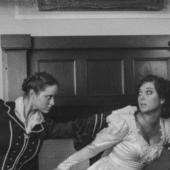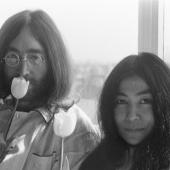Film Tricks
For over a hundred years, film producers generate tricky effects to make their films more exciting. From the first basic "disappear" animations over the stop-motion experiments up to the milestones of "computer-generated imagery" - the motto was always: Higher, further, faster. It is the credo of the film conjurers to create the perfect illusion in the film.
The Frenchman Georges Méliès applies as the inventor of visual effects. He discovered early on the magic options in film. An accident made him discover the stop motion technique. He filmed a street scene in Paris. Suddenly the film tape got stuck. After a short time the camera continued recording, of course, the scenery but he now changed. When Méliès checked the film, he noticed that passersby appeared and just as quickly disappeared. He experimented with double and multiple exposures, fades, and then developed the Stop Trick - the forerunner of the Stop Motion.
The first big "special effects" film of cinema was "Metropolis" by Fritz Lang from 1927. Produced by the Universum Film AG (UFA) this film made six million marks. A hitherto unimaginably high amount to produce only one film. Fritz Lang Metropolis let built a table-high miniature city. The great challenge then was how to connect the model making shoots with the actions of the actors? The solution was the Schüfftan'schen Mirror Trick: The director can bring objects into the camera's view that were positioned off-centered. The camera therefore needs get positioned next to the city model and in front of a mirror at an angle of 45 degrees. The camera then shoots the actors through the mirror and still captures the model standing aside. Today the film "Metropolis" is part of the UNESCO World Heritage Site.
In the 30s the stop-motion technique was developed further. In the film “King Kong” the monkey, that in reality was only 45 centimeters tall, consisted of wire, rubber, cotton and fur. It was shooted picture for picture and changed a bit changed each time. As the final result in the final film one perceives the illusion of motion. Rear Projection here was used for the first time. In Rear Projection, actors perform in front of a screen on which a special projector may produce any background. The Back Projection technique was the leading animation technology for a long time. Alfred Hitchcock was a master of classic special effects in the 40s.
In 1977 George Lucas with his "Star Wars" started the change in the history of film. The films from this time took advantage of electronics and computers. However, since there was still no production site for this type of special effects, Lucas founded his own animation technology company: The "Industrial Light and Magic" (ILM). The ILM in the coming decades stood for master strokes in animated films such as Star Trek, Indiana Jones, Jurassic Park, Men in Black or Terminator.
Today, digital technology has revolutionized the movie business. Computer animation such as computer-generated imagery (CGI) are the means of choice for stunning special effects. Also blue screen is used very often today, so the director can review and edit any scene image. In the movie "Matrix" for the first time the "Motion Capture Method" was used. In this context human movements are shooted, recorded by the computer and transferred to models that are generated on the computer.
The development of film animations is exciting. We remain keen-eared in terms of future updates on the market pertaining to movie FX.




